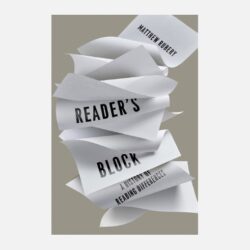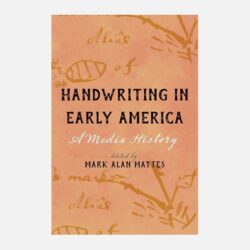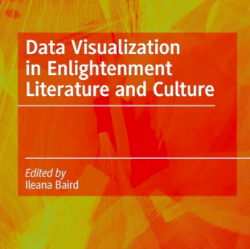As seen in the recent Disability and Accessibility in Book Studies Bibliography published by SHARP News, there is not currently a lot of work published at the intersection of disability studies and book history; the scholarship that does exist primarily focuses on reading tools and techniques for people with visual impairments. Matthew Rubery’s Reader’s Block is the only book-length work at this intersection entirely focused on cognitive print disabilities. Rubery brilliantly connects these disciplines through an analysis of neurodivergent reading requirements, abilities, and habits.
Category: Book review
Adam Gordon. Prophets, Publicists, and Parasites: Antebellum Print Culture and the Rise of the Critic.
Each chapter of Prophets, Publicists, and Parasites centers on a particular nineteenth-century American critic: Ralph Waldo Emerson, Rufus Griswold, Edgar Allan Poe, Margaret Fuller, and Frederick Douglass. The book’s introduction contextualizes the critics’ historical moment as one in which growing nationalism, advances in printing technologies, and a productive economy enabled the emergence of the literary critic as a fully-fledged profession. These changes also encouraged the proliferation of literary criticism in a variety of print forms.
Jeff Jarvis. The Gutenberg Parenthesis: The Age of Print and Its Lessons for the Age of the Internet.
In 2011, journalist and digital media expert Jeff Jarvis published Public Parts: How Sharing in the Digital Age Improves the Way We Work and Live (New York: Simon & Schuster), a book that explores how the internet has created public spaces in which people can share their knowledge and experience. In The Gutenberg Parenthesis (2023), Jarvis turns his critical attention to the claim that formats of information sharing that have emerged in the digital age will wipe out preexisting literary traditions and institutions established during the age of print.
Mark Alan Mattes, ed. Handwriting in Early America: A Media History.
In 2010, changes to American education standards eliminated the mandate to teach handwriting in public schools. As a result many states dropped the practice in classrooms. Yet in recent years trends have begun to reverse, and now more than 20 states once again include formal cursive instruction (Elizabeth Heubeck, “More States Require Schools to Teach Cursive Writing. Why?” EducationWeek, 16 November 2023). On the first day of 2024, California became one of the latest to do so, but newspapers reflect lingering skepticism. In one opinion piece entitled “Spare the state’s schoolchildren cruel and cursed cursive lessons,” a columnist for the Los Angeles Times concluded, “Cursive is for when you have nothing else to do, or want to live out some steampunk fantasy” (Gustavo Arellano, “Spare the state’s schoolchildren cruel and cursed cursive lessons,” Los Angeles Times, 15 January 2024). It was with this context in mind that I read Handwriting in Early America: A Media History, edited by Mark Alan Mattes. Why does handwriting matter, and how can scholars and educators better explain its significance?
Ileana Baird, ed. Data Visualization in Enlightenment Literature and Culture.
Over ten finely documented and illustrated chapters, Ileana Baird and her twelve contributing writers offer scholars of the long eighteenth century (1660-c1800) a timely high-tech methodology: graphical conveyance of information. Baird’s new book, Data Visualization in Enlightenment Literature and Culture (2022), demonstrates the utility of content imaging. Baird and her writers have constructed datasets of research on selected topics in visually accessible designs: graphs, tables, figures, tabulations, charts, clustering, topic modeling, network graphs, data mapping,





